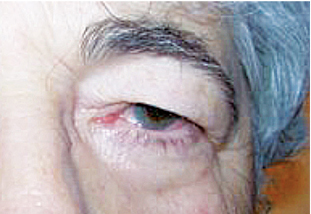 |
| A new study confirms more side effects of prostaglandin analogues: ptosis,
periorbital fat loss and sulcus deepening. |
In this study, the researchers evaluated 157 current, 15 past and 171 non-PGA users for signs of prostaglandin-associated periorbitopathy. The subjects underwent external digital photography and systematic external adnexal examination, and gave the investigators a history of their glaucoma medication use.
At the conclusion of the study, the researchers determined that patients who currently used bimatoprost 0.03%, travoprost 0.005% or latanoprost 0.004% were much more likely to exhibit upper lid ptosis, levator dysfunction and lower lid retraction than past or non-PGA users. Specifically, current PGA users were 230 times more likely to develop upper-lid dermatochalasis and 249 times more likely to experience periorbital fat loss in the lower lid.
Eye doctors have been anecdotally reporting this problem for a few years now, and smaller case studies and documented it. Ophthalmic drug manufacturers have already changed the product information of PGAs to acknowledge reports of “periorbital and lid changes associated with a deepening of the eyelid sulcus,” though not in the list of side effects. But this is the first large cross-sectional study to confirm multiple adverse effects, including lower lid steatoblepharon, upper lid levator dysfunction and upper lid ptosis.
“As we continue to use medications as much as we use prostaglandins, it is not unreasonable to come across new adverse events never addressed in the initial safety studies,” says Joseph W. Sowka, OD, professor of optometry, director of the Glaucoma Service and chief of the Advanced Care Service at Nova Southeastern University College of Optometry in Ft. Lauderdale, Fla. “But it must be remembered that these findings, while possible, should not negate the widespread use of a medication class that has revolutionized glaucoma therapy.”
For his part, “I have never encountered ptosis from prostaglandin use, and no patient has ever reported this to me,” he adds. While Dr. Sowka says this research will not alter his prescribing of prostaglandins, he “will not discount any patient report of ptosis or sulcus deepening, and will immediately be prepared to discontinue the medication should such complaints be mentioned.”
Shah M, Lee G, Lefebvre DR, et al. A cross-sectional survey of the association between bilateral topical prostaglandin analogue use and ocular adnexal features. PLoS One. 2013 May 1;8(5):e61638.

